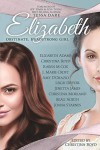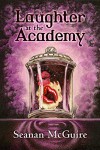

I chose"The Trick To Time" by Kit De Waal as one of the six books I wanted to read from the sixteen books on the 2018 Women's Fiction Prize Longlist and I'm delighted that I did as it is one of the best books I've read so far this year. I recommend the audiobook version of "The Trick To Time" as Fiona Shaw's narration is perfect. Hearing the voices of the two Irish Aunts nicknames Pestilence and Famine, I was transported back to listening to my grandmother and her sister who spoke in exactly the same way.
I went into the book without reading the publisher's summary and I'm glad I did as it reads like the summary of a different book entirely, suggesting either magical realism or a historical romance.
For me, the strength of "The Trick To Time" is that exists purely to tell the story of how the main character, Mona, came to be Mona. The story is told in two parallel timelines: Mona as she reaches her sixtieth birthday, living alone in a seaside town in England, making dolls and providing some mysterious service to some of the women who visit her shop and Mona as a little girl, growing up in Ireland and then moving, in her late teens, to Birmingham to make a new life for herself.
The thing that most engaged me about the book was understanding how the little girl playing on the beach, and the young woman going nervously to her first dance in Birmingham, became the calm, strong but sad woman who makes wooden dolls. The parallel timeline structure of the book kept this at the centre of my attention and kept surprising me, not through the use of tricks or crazy plot twists but by how real and honest the changes in Mona seemed. I'm the same age as Mona and when I look back, I also wonder how the boy I was became the man I am. I was there and I yet I understand Mona's journey better than my own.
I was delighted to see that the sixty-year-old Mona isn't presented either as an old-woman far along the crone road or a woman still pretending to be twenty. Mona knows herself, she knows what's happened to her, she recognises the compromises and limitations in how she lives now and she has still a strong desire to find a way to live her life.
There is a real sense of time passing and perceptions changing while the people themselves remain who they have always truly been as if time simply wears away the bits of themselves that they'd only dressed up in in their youth.
This is a deeply empathic book about the nature of grief, the enduring impact of loss and the effect of time on emotions, memory and our own sense of identity.
I won't put spoilers in this review so I won't talk about the central trauma of Mona's life, except to say that it made me angry and it made me cry and it filled me with deep admiration for the service that Mona provided to others in later life.
Mona is a working-class Irish woman, living as an immigrant in Birmingham at the time of the IRA bombing that unleashed so much pain and hate. Her ambition is simple: to make a family with the man she loves. By today's standards, they have nothing but they have enough to live independently and dream of a life filled with children who are loved and cared for with: "A roof on the house, food on the table and a coat on the hook".. I recognise those kinds of circumstances and that simple ambition but I rarely see it in books that are nominated for literary prizes. I also recognise the situation of being an immigrant and just trying to make your way. I like the matter-of-fact way this was dealt with: no polemics, no dog-whistle posturing, just an honest personal narrative.
The writing is beautiful without being flowery. From the beginning, I understood that there was more going on than I yet knew about and that understanding filled me with pleasant anticipation of a real story worth waiting for. It was a story that caught me by surprise time and again, up to the final chapter, but each surprise made more sense of Mona's life and actions rather than feeling like a magic trick.
Although this is Mona's story, the other people in it are more than cyphers. They are people with histories and emotions and opinions of their own and they rarely take the path that convention or cliché would channel them to.
"One day, you will want these hours back, my girl. You will wonder how you lost them and you will want to get them back. There's a trick to time. You can make it expand or you can make it contract. Make it shorter or make it longer."
The gentle, sad truth of this sets the tone for the whole novel.
I'll be reading Kit de Waal's back-catalogue and anything else she publishes. I think she's an extraordinary talent.
 If you'd like to know more about her and how she wrote "The Trick To Time", take a look at this Interview with Kit de Waal in "The Guardian" covering:
If you'd like to know more about her and how she wrote "The Trick To Time", take a look at this Interview with Kit de Waal in "The Guardian" covering:
"The novelist on her Irish heritage, the passing of time and why she’s glad she didn’t start young"

 6
6









